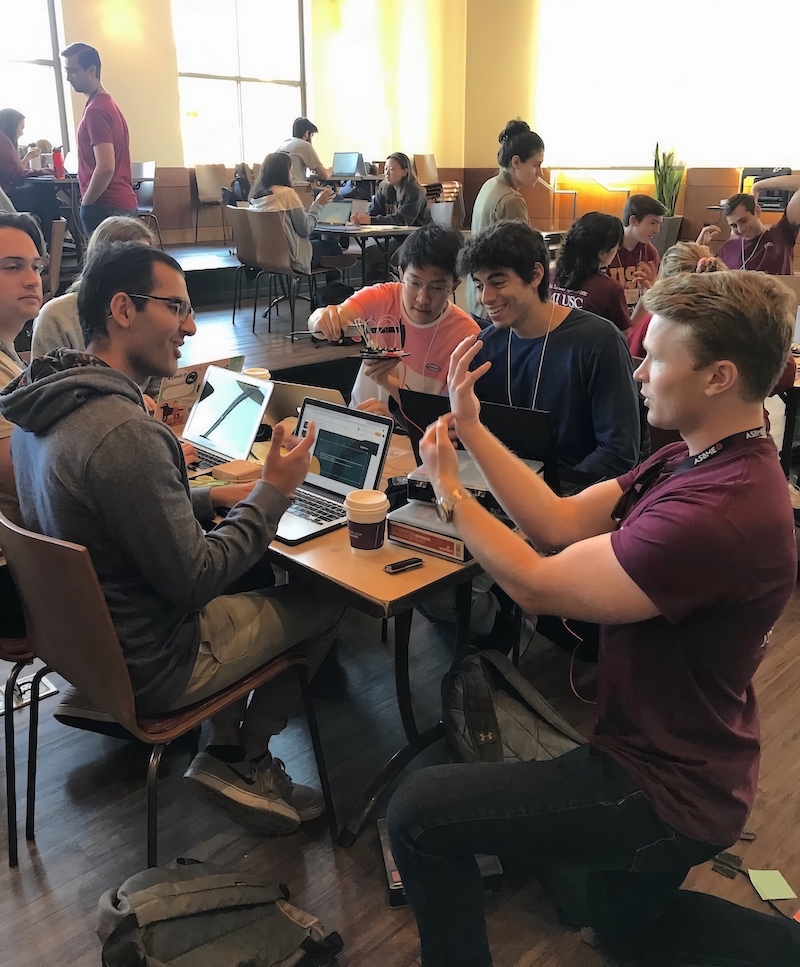ASBME Makeathon: USC interdisciplinary collaboration

February 13, 2020
by Kevin
This past weekend, I had the opportunity to attend the Associated Students of Biomedical Engineering (ASBME) Makeathon event as an occupational therapy mentor. The Makeathon is an energy-charge 30 hour hackathon event in which 12 teams compete to develop and prototype a medical device for a selected real-world population. Using a combination of programing, CAD design, and access to the USC fabrication lab, including the 3D printers, each team rapidly develops an innovative medical or therapeutic technology. A Makeathon or hackathon challenges teams to produce months worth of work in just several days, in addition to having the material constraint of using only the materials provided by ASBME. While this event is primarily for students in the USC Viterbi Biomedical Engineering program, the organizers took an interdisciplinary approach by incorporating mentors from the master’s and doctorate programs of the Chan Division of Occupational Science and Occupational Therapy and the Division of Biokinesiology and Physical Therapy.
This year, the teams were challenged to develop a rehabilitation device that promoted or enhanced physical therapy activity in a nonclinical setting for persons who are experiencing hand or wrist dysfunction post-stroke. Additionally, the device had to be intuitive and address one aspect of motor control including strength, dexterity, and joint extension. Due to my background in 3D modeling and education in occupational therapy, I jumped on the opportunity to take part in the Makeathon as a mentor for the teams.
From the perspective of occupational therapy, the OT students were able to provide valuable advice and suggestions to each team considering person, environment, and occupational of the potential user. During my mentorship time, I performed role plays to help the teams imagine the device in everyday use, provided anatomical explanations pertaining to post-stroke hand and wrist considerations, and advised on design aspects. The undergraduate biomedical engineering students were incredible! I’ve never seen such fast CAD design or Arduino programming. While the students were working furiously to produce their device, they took time to seek out the mentorship of the OT and PT students, which helped the teams understand the rehabilitation applications of their designs. Everything from electronic glove games to dexterity puzzles were made during the course of the competition.

Explaining the extensor anatomy of the wrist and hand during mentorship.
Overall, it was amazing to see biomedical engineering, physical therapy, and occupational therapy students collaborating effectively to inspire truly creative innovation. Attending this event was a subtle reminder to the amazing minds and talent of the students at USC!
⋯
Next by tag Externships ⟩ Getting Involved ⟩
⋯





